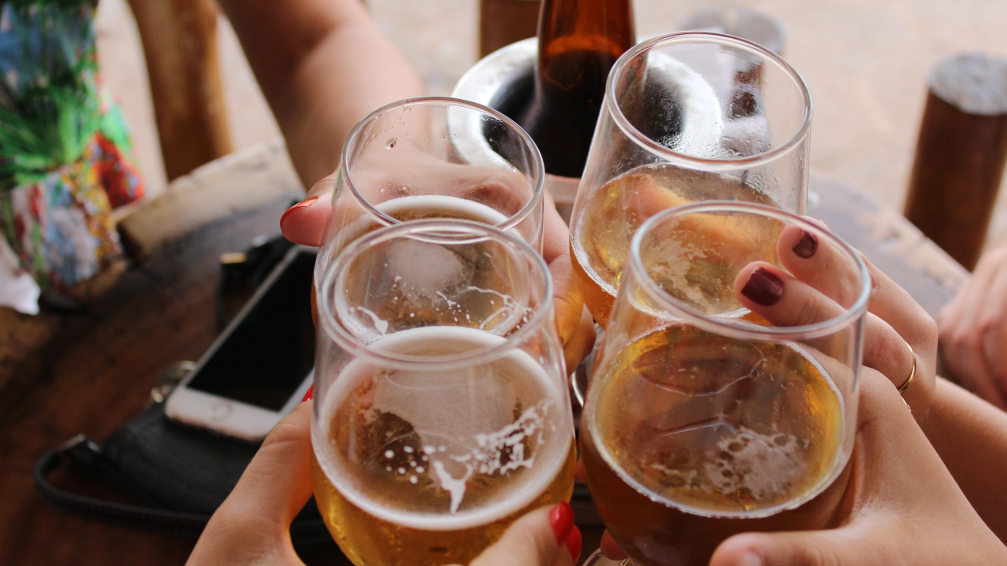In the beer world, there are two overarching families: ales and lagers. Ales have been around much longer, but Lagers dominate the modern world. Let’s take a look at the differences between the two.
Yeasts
The core factor that separates these two families is the yeast used to ferment them. After all, beer without yeast isn’t beer. A beer recipe can have the same malt and hops, but with different yeasts they will be very different beers. In the beginning (think thousands of years ago) there wasn’t the distinction of these types of yeasts, because they didn’t know what yeast was! These primitive beers would have just fermented spontaneously, each batch could be vastly different from the last, and they surely didn’t taste anything like beer we know today.
Over the next couple thousand years a lot happened in brewing science and the understanding of yeasts. Fast forward to the Middle Ages where brewers were now fermenting beer with yeast at warmer temperatures and calling them ales. Ales ferment quickly, they eat up a lot of sugars from the malt, and they create by-products called esters and phenols (fruity, and spicy components). Some are brewed with spices and honey, and they are brewed at all times of the year.
At this time, down in Bavaria they noticed beers brewed in the winter season seemed to last longer than ones brewed in the summer. Summer-brewed beers didn’t taste right, they were unstable, most had off flavours, and they didn’t keep as long. This didn’t sit well with Bavarian Duke Albrecht V, so much so that in 1553 he made it law that beer could only be brewed between late September till the end of April. Of course, this posed a problem to the brewers- they had to brew and store enough beer to last all summer and into the fall. The solution would be the start of what we now know as lager.
Cool temperatures + lager yeasts = crisp, clean flavours
Lager takes from the German word lagern, which means to store. Bavarian brewers would brew batch after batch all winer, store them in big wooden barrels (see my blog post about barrels), they’d fill their cellars, and even sometimes nearby caves, and cut massive blocks of ice from the frozen lakes and put those in the cellars and caves near the barrels. Effectively creating some of the first large scale refrigeration, these ice caves would keep the beer cool and stable all summer long.
Another thing that happened over time while these casks were sitting; the ale yeasts became dormant in the cold temperatures which gave way for lager yeasts to establish themselves in the beer and get to work. These yeasts take unwanted off flavours and compounds, reabsorbing them so they are not longer in the beer. This process makes the beer crystal clear. Lager yeasts when left for long periods of time can also ferment more complex sugars than ale yeasts, meaning the resulting beer is usually much more dry – terms like “crisp” and “clean” are used a lot when describing lagers.
In the modern beer world, these yeasts as well as many sub-forms of lager and ale yeasts, are now cultured and separated. This means they can be purchased from yeast supply companies and added to homebrew or large scale breweries to create the desired beer the brewer is trying to make.
Lager Misconceptions
A big misconception is that all lager beers are just golden coloured, light and simple beers while ales are all bitter and hoppy, sometimes dark and heavy. It couldn’t be further from the truth.
The problem is when the majority of the beer drinking world thinks of lager, it thinks only of the one style of light, “American Style” fizzy beer in 12-packs – when in reality there is a whole family of lager beers out there!
The reason for this is that when European settlers started coming to America, a lot of them were German. They brought with them the thirst for these lager style beers as well as the know-how to make them. By prohibition, there were an estimated 5000-6000 breweries operating in the US. After prohibition, there were only a handful that were able to survive, especially with the very strict production laws that made it very difficult for new breweries to open. This paved the way for some of these original powerhouse breweries to become mega “macro” producers and gain huge market share. Some of these breweries include Anheuser-Busch, the maker of Budweiser and Bud Light, as well as The Miller Brewery.
The takeaway:
If you drink craft beer because you got sick and tired of the same old beer you’ve seen countless times, don’t give up on lager! There are some exceptional lagers brewed in the craft community, many of them local to Nova Scotia. Propeller and North Brewing make wonderful Pilsners. Side note: Pilsner is just a sub-style of lager, originally from the Czech republic, they have higher hop presence and bitterness than a light lager. There might even be a Pilsner coming from Garrison in the Fall that was done with a little help from your friends at Bishop’s Cellar…
If you like rich dark beers, some lagers you’d like might be a Dunkel, Dunkel Bock, or Schwarzbier. Even if you like hoppy beers, there are hopped lagers starting to come around, too.

